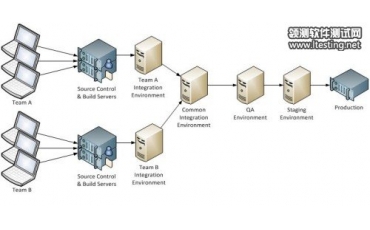Android命令am详解
usage: am [start|broadcast|instrument|profile] am start -D INTENT am broadcast INTENT am instrument [-r] [-e
The start command starts activity. Use -D option to make 'DebugOption' true. The broadcast command sends broadcast. The instrument command starts instrumentation. Use -r option to make 'rawMode' true. Use -e option to add the pair of ARG_NAME and ARG_VALUE into Bundle. Use -p option to specify profileFile. Use -w option to make 'wait' true in order to new an instance of InstrumentationWatcher. Use COMPONENT to specify the name of the instrumentation component. The profile command turn on/off profiling in a particular process specified by PROCESS.Use start option to turn on and stop to turn off.Use PROF_FILE to specify the file path of profile. Use -a to set action specified by ACTION to be performed. Use -d to create a Uri(data) which parses the given encoded URI string DATA_URI. Use -t to specify the type specified by MIME_TYPE. Use -c to add a new category specified by CATEGORY to the intent. Use -e or --es to add extended data to the intent.EXTRA_KEY specifies the name of the extra data and EXTRA_STRING_VALUE specifies the string data value. Use --ez to add extended data to the intent. EXTRA_KEY specifies the name of the extra data and EXTRA_BOOLEAN_VALUE specifies the serializable data value. Use -e or --ei to add extended data to the intent. EXTRA_KEY specifies the name of the extra data and EXTRA_INT_VALUE specifies the serializable data value. Use -n to explicitly set the component specified by COMPONENT to handle the intent. Use -f to set special flags controlling how this intent is handled.FLAGS specifies the desired flags. Use URI to create an intent from a URI.





